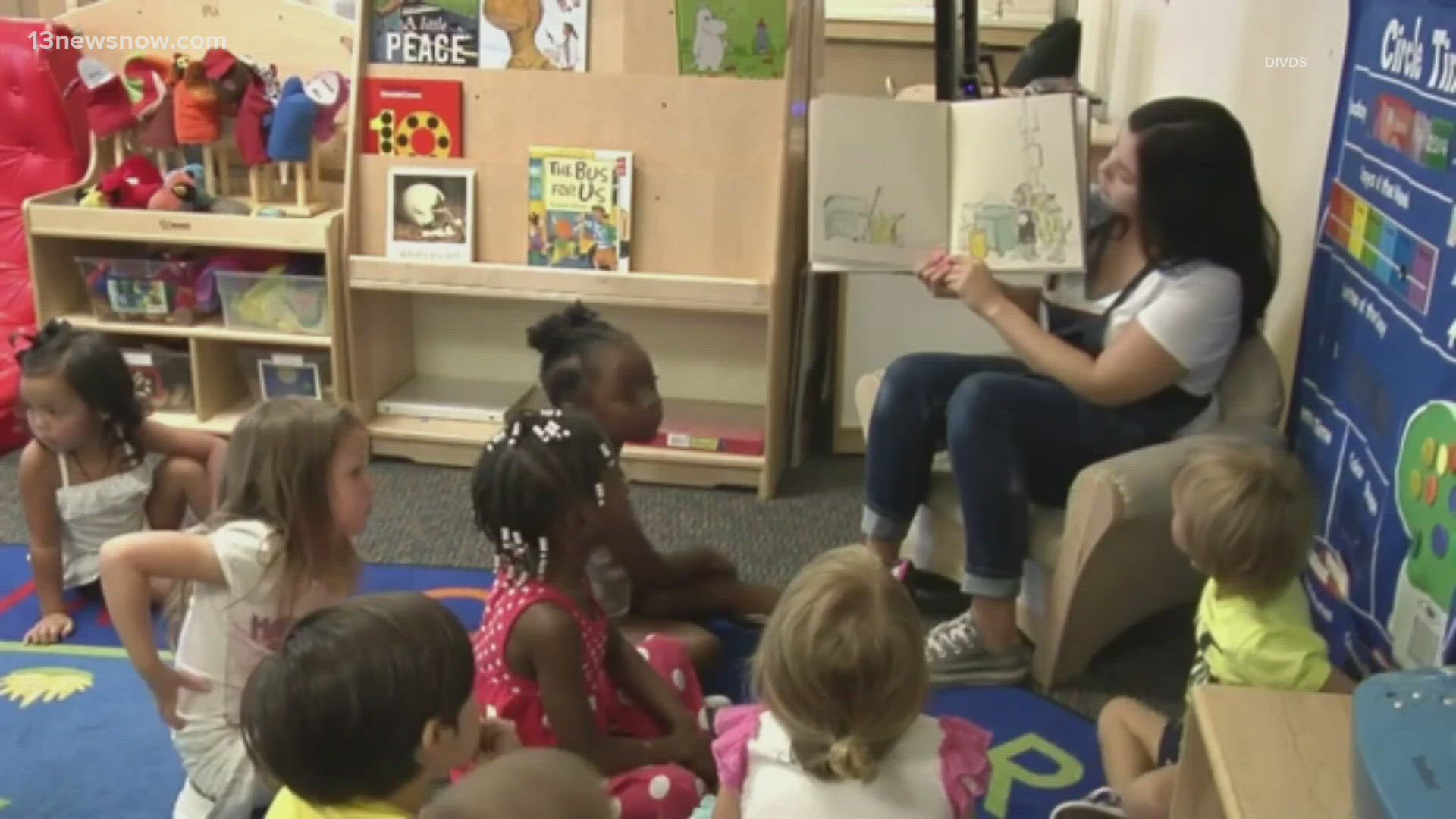VIRGINIA BEACH, Va. — It's Jane Glasgow's job to stay on top of eye-opening statistics about child care in Virginia.
Just because she deals with it every day, doesn't make the facts any less surprising.
“We’re in the midst of a childcare crisis, a lot related to the workforce and bringing early educators into the field," Glasgow said.
In front of Virginia Beach City Council on Tuesday, Glasgow -- the Executive Director of the Minus 9 to 5 initiative within Old Dominion University's School of Health Sciences -- updated city leaders on what the affordable child care crisis looks like in Hampton Roads.
There are an estimated 75,000 children younger than five years old in Virginia's southeastern region of tracking, which includes Hampton Roads' major localities such as Virginia Beach, Norfolk, and Chesapeake but does not include the Peninsula.
Of those 75,000 children, 68% of them have "all available" parents already working in the workforce, indicating the pool of families that most likely seek out some form of child care.
Rising child care costs have outpaced inflation
According to Glasgow, child care costs have outpaced inflation at a 6-to-1 ratio.
Regionally, the Tidewater region surpasses the state average costs of infant child care, whereas the city of Virginia Beach is even higher than that:
- Virginia: $14,808
- Regional: $17,420
- Virginia Beach: $18,460
Lack of available space
There are an estimated 49,000 child care slots, both entirely publicly funded and from the private sector, for the region's children younger than five years old.
Within the last year, Glasgow says the state has lost 36% of its affordable child care workforce, one contributing factor leading to often duplicative and growing waitlists of parents trying to find child care openings.
There are also an estimated 29,000 children who live at least 200% below the federal poverty line, but only 8,900 publicly funded child care spots for the region.
“If you’re looking at those 200% below the poverty level, we would need probably an additional 7,000 or 8,000 publicly funded spots. For full pay, not the publicly funded spots, that’s what hard to quantify, because waiting lists can be duplicative," she said.
Cause and effect of early education
Childcare is not just physically looking after a child Glasgow says, but developing their early motor functions so they're ready for elementary school education.
But as recently as 2023, 40% of kindergarteners are not school-ready, and 56% of kindergarteners who come from low-income households are not ready either.
“Many people think childcare is taking care of children, 'It's just day care.' But any experience a child has is a learning experience," she said.

